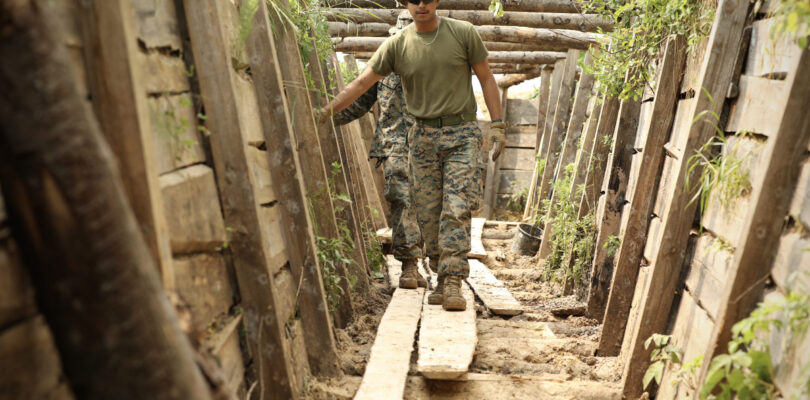U.S. Marines and sailors worked alongside Latvian Army troops recently to clear woods and build a warren of trenches for countering potential drone threats — both as practice for real-world deployments and to test new battlefield tactics.
Marines from the 8th Engineer Support Battalion and Seabees with Naval Construction Battalion 14 performed trench-building and fortification activities in an exercise in Skrunda, Latvia, according to a Navy release.
“These field fortifications are built to reduce detection, limit exposure to unmanned systems, and enhance force protection across the battlespace,” Lt. j.g. Wiatt Lewis of Naval Construction Battalion 14 said in the release.
Service members used lumber milled from the Latvian Army’s field-deployable sawmill to reinforce trench walls and build overhead cover and concealment, according to the release.
The training in western Latvia was part of the larger Baltic Operations exercise, or BALTOPS, an annual exercise in the Baltic region that focuses primarily on maritime and air scenarios.

The war in Ukraine has shown how trenches, overhead cover and field fortifications are vital for protection against drones, the release notes.
Drones have become a regular part of combat in the conflict, even culminating in major attacks such as Ukraine’s Operation Spider’s Web earlier this month, which saw coordinated drone strikes launched deep within Russian territory on Russian airfields. Ukrainian forces deployed 117 drones and struck 20 Russian military aircraft on the ground.
But small ground units must contend with drone threats as well. The quickly configurable aerial devices can spot troops for strikes and carry munitions to drop themselves.
“We are always thinking about our visibility from above, the effects of thermal detection, and how to keep the position secure from multiple angles,” Staff Sgt. Austin Leigh, a combat engineer with the 8th Engineer Support Battalion, said in the release.




